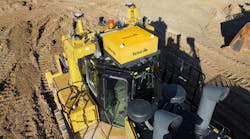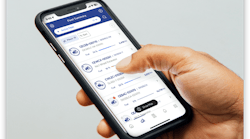Diagnostic code monitoring is critical to machine maintenance and uptime optimization, which ties in directly with equipment return on investment (ROI).
Diagnostic codes are sometimes called “fault codes.” But “diagnostic codes” is a more accurate term for these messages, since a large percentage of diagnostic codes are intended to provide machine owners or fleet managers with advance notice of an impending problem, rather than a machine failure.
Eight manufacturer companies and 12 user company representatives comprise the membership of the AEM/AEMP Telematics Committee.
John Deere Construction & Forestry is an AEM member company and part of the AEM Telematics Task Force; Nick Bollweg is engineering manager, WorkSight Solutions.
Click for more information on the AEM/AEMP Telematics Standard.
Diagnostic codes provide a wealth of opportunities to reduce equipment operating costs. And those opportunities are only enhanced by today’s machine telematics systems, which provide wireless, real-time connection to machines in the field.
You may already have access to diagnostic codes through your OEM’s telematics platform. Here are five ways they can help you save money:
1) Changing operator behavior. Although the codes from each OEM may be different, many are intended to provide less severe early notification to try to prevent the “machine down” most-severe codes and situations.
For example, some OEMs may send a code for “engine overspeed,” which could be caused by an operator driving down a hill too fast. Reacting to this code by training the operator to drive differently could prevent a future, more severe engine-failure-related diagnostic code.
2) Optimizing machine maintenance. Monitoring diagnostic codes is a key part of an effective maintenance operation. Fleet managers can derive the most value from this data by enabling the codes to be sent to their equipment dealer, and developing a plan with the dealer’s service or maintenance manager concerning what actions to take and who should take them.
3) Improving machine uptime. Reacting to codes as they are sent wirelessly can significantly improve machine uptime and reduce operating costs. For example, imagine a job site with five articulated dump trucks being loaded by one excavator. The contractor’s job planning and costing is based on this number of machines.
One day, a diagnostic code indicates that a filter is plugged on one of the ADTs and that machine is unable to work. Now with only four trucks, production is lower and costs increase by 20 percent.
If the service manager reacts quickly to the code, a technician can be immediately dispatched with the right part and return the machine to service with minimal loss to the day’s production. The key to this story is that faster reaction time minimizes costs and maximizes profits.
4) Managing shop resources. Diagnostic code monitoring helps the service manager better manage shop resources by telling them what the issue is, which parts are needed, and what level of skill the technician assigned to the machine should possess. For example, is the most senior tech required for the job, or is the maintenance basic enough that a newer, less-experienced tech would be sufficient?
5) Identifying outside issues. Carefully watching diagnostic codes can help identify outside issues that may be affecting machine performance. An example is a “fuel filter plugged” code. By monitoring the codes in real time, the fleet manager can see that there may be contaminated fuel in the fuel barrel and try to quickly transport fresh fuel to the job site before more machines are affected. This keeps machines up and running, maintains production, and reduces cost.
A new ISO telematics standard under development by the Association of Equipment Manufacturers (AEM) and the Association of Equipment Management Professionals (AEMP) defines a format that enables delivery of diagnostic code information as part of the telematics data feed.
Although the structure of the diagnostic code identifier may be different for each manufacturer, the information will be included in one of 19 standardized data fields that will be available to end-users. This will make it easier for customers with mixed fleets to monitor this information using their own business systems and software.




